#ramiro i of aragon
Explore tagged Tumblr posts
Text
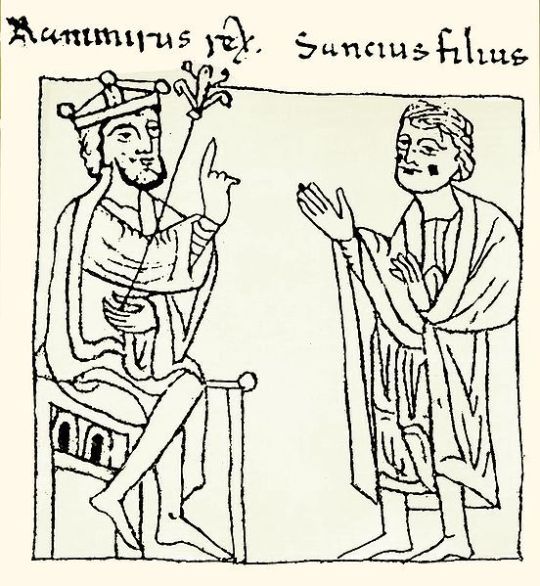

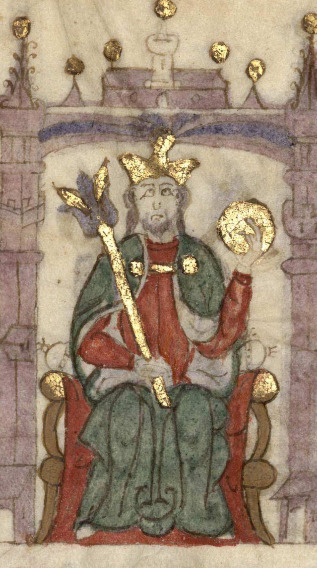
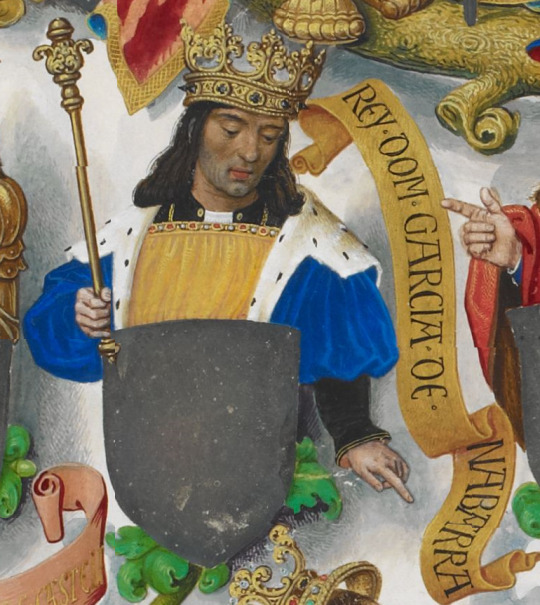


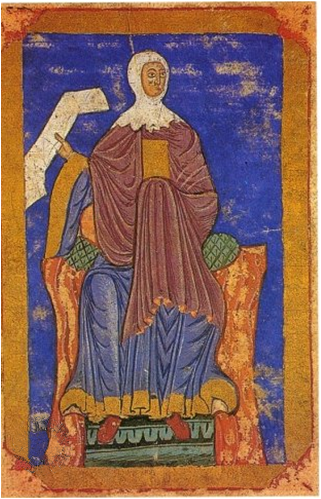

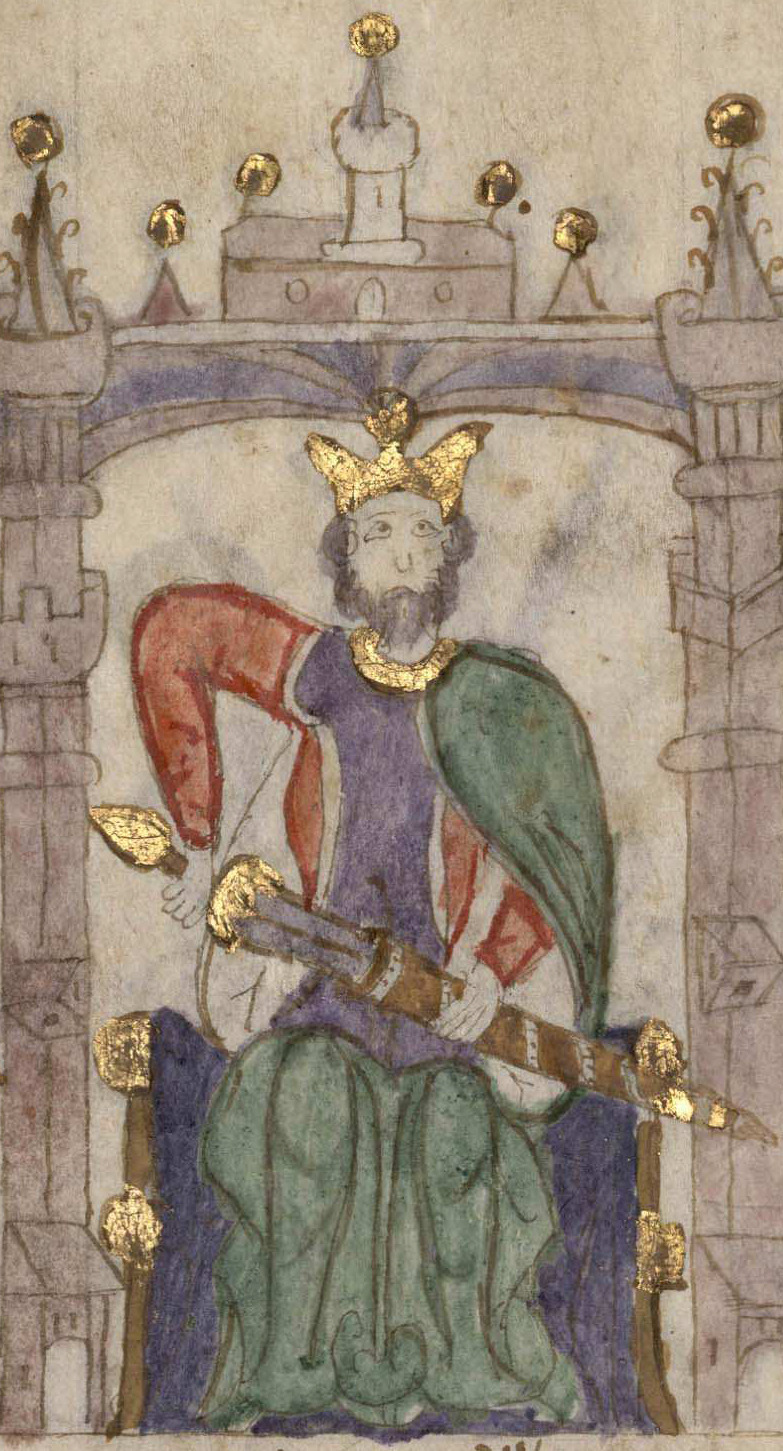
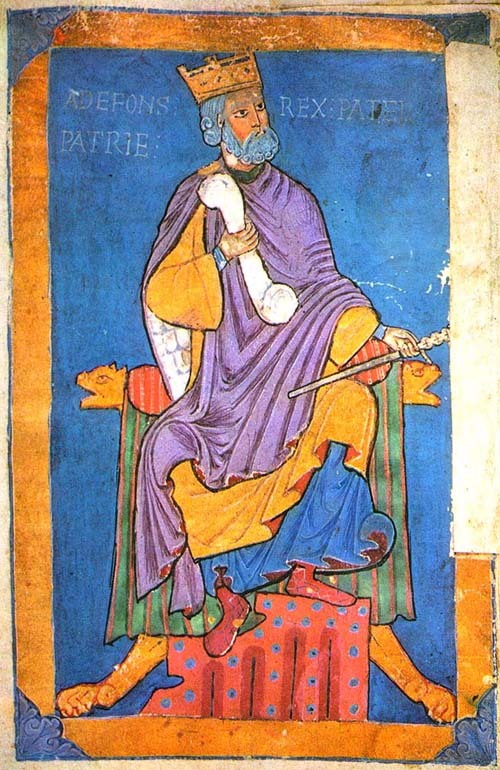
The Bastard Kings and their families
This is series of posts are complementary to this historical parallels post from the JON SNOW FORTNIGHT EVENT, and it's purpouse to discover the lives of medieval bastard kings, and the following posts are meant to collect portraits of those kings and their close relatives.
In many cases it's difficult to find contemporary art of their period, so some of the portrayals are subsequent.
1) Ramiro I of Aragon (1006/7- 1063), son of Sancho III of Pamplona and Sancha de Aybar; with his son Sancho I of Aragon & V of Pamplona (1043-1094)
2) His wife, Ermesinda of Foix (1015 - 1049), mother of Sancho I of Aragon. Daughter of Bernard Roger de Foix and his wife Garsenda de Bigorra; and Sancha of Aragon (1045-1097), daughter of Ramiro I and Ermesinda
3) His father, Sancho III of Pamplona (992/96-1035), son of García II of Pamplona and Jimena Fernández
4) His brother, García III of Pamplona (1012-1054), son of Sancho III of Pamplona and his wife Muniadona of Castile
5) His nephew, Sancho IV of Pamplona (1039- 1076), son of García III of Pamplona and his wife Placencia of Normandy
6) His brother, Ferdinand I of Leon (1016- 1065), son of Sancho III of Pamplona and his wife Muniadona of Castile
7) His niece, Urraca of Zamora (1033-1101), daughter of Ferdinand I of Leon and Sancha of Leon
8) His niece, Elvira of Toro (1038-1099), daughter of Ferdinand I of Leon and Sancha of Leon
9) Sancho II of Castile (1038/1039-1072), son of Ferdinand I of Leon and Sancha of Leon
10) Alfonso VI of Leon (1040/1041-1109), son of Ferdinand I of Leon and Sancha of Leon
#jonsnowfortnightevent#jonsnowfortnightevent2023#asoiaf#a song of ice and fire#day 10#echoes of the past#historical parallels#medieval bastard kings#ramiro i of aragon#sancho i of aragon#sancha of aragon#ermesinda of foix#sancho iii of pamplona#garcía iii of pamplona#sancho iv of pamplona#ferdinand i of leon#urraca of zamora#elvira of toro#sancho ii of castile#alfonso vi of leon#bastard kings and their families#canonjonsnow
31 notes
·
View notes
Text

Petronila I of Aragon
(1136-1173)
She was the first fully-fledged woman queen of Aragon, with a title in her own right. Petronila came to the throne through special circumstances. Her father, Ramiro, was bishop of Barbastro-Roda when his brother, Alfonso I of Aragon, died without an heir in 1134, and left the crown to the three religious military orders. His decision was not respected: the aristocracy of Navarre elected a king of their own, restoring their independence, and the nobility of Aragon raised Ramiro to the throne. As king, he received a papal dispensation to abdicate from his monastic vows in order to secure the succession to the throne.

King Ramiro II the Monk married the daughter of the Count of Poitiers, Agnes of Aquitaine, a widow of proven fertility who had given birth to four children in her previous marriage. The expected heir to the throne was born in 1136. For first time, the destiny of Aragon fell on a girl, named Petronila. Almost since her birth, she was a key piece in the political games of the Iberian Peninsula. When Petronila was just a little over one year old, was betrothed to Ramon Berenguer IV, Count of Barcelona, who was twenty-three years her senior.
King Ramiro abdicated and returned to monastic life. Queen Agnes crossed the Pyrenees again and confined herself to the Abbey of Fontevrault, where she died years later. There is no evidence that Agnes took any part in the affairs of her daughter Petronila. Except for the first few weeks of her life (without the possibility of any recollection) and entrusted to the care of a housekeeper, Petronila never saw her mother.

Her future husband refused to take charge of her education, and the girl was sent to Castile to be educated by her sister-in-law Berenguela of Barcelona, queen of Castile. In Castilian lands, King Alfonso VII wanted to marry Petronila to his son, the infante Sancho, heir of Castile. The Aragonese nobility, alarmed by this situation, met in Cortes to demand the return of the young queen to Zaragoza. Also her father, Ramiro II, threatened to abandon his monastic retreat to defend the interests of the kingdom, and his daughter. Finally, Petronila left Castile and returned to Aragonese lands.

When Petronila was fourteen, the betrothal to Ramon Berenguer IV was ratified at a wedding ceremony held in the city of Lleida. This marriage sealed the union of Aragon with the Catalan counties, so Queen Petronila has gone down in history as the mother of the Crown of Aragon.
The relationship between Ramon and Petronila was stable and fruitful, although he, with more experience and authority, played a predominant role in government affairs, she was not a submissive queen. Petronila was aware of her power as the legitimate heir to the Aragonese throne and remained firm in her role, although discreetly.

Petronila and Ramon developed a relationship of mutual respect, where trust and political collaboration prevailed over any differences. Ramon Berenguer was never king. The Count of Barcelona used the title Prince of Aragon. The marriage produced four sons and one daughter.
In the summer of 1162, when Ramon Berenguer went to Turin to meet with Emperor Frederick Barbarossa, the Count of Barcelona fell ill and died. The eldest son, Ramon, received the title of Count of Barcelona, and as he was a minor, was placed under the tutelage of Henry II of England.

Widowed at the age of 26, Petronila did not want to take a husband again and was the mistress of her own actions. Being a woman in the power was not easy. Queen Petronila faced constant scrutiny from nobles and clerics, many of whom doubted her ability to rule. For two years she ruled and administered her kingdom of Aragon. Attentive to preserve the peace and the integrity of Aragon, Petronila signed a truce with Navarre. She kept the ambitions of the local nobles in check and ensured that her son could govern without internal divisions. The marriage of her son with Sancha of Castile was one of Petronila's most important strategic moves. This marriage alliance not only strengthened ties with the powerful kingdom of Castile, but also guaranteed peace on a traditionally conflictive border. The chronicles tell us a curious conspiracy that Queen Petronila had to dominate, when an elderly gentleman claimed to be the late King Alfonso the Battler.

Her son and heir was only seven years old when Petronila abdicated in his favor. When Ramon inherited the throne from his mother, he changed his name to Alfonso II out of deference to the Aragonese. Queen Petronila died in Barcelona in October 1173. She was buried at the cathedral of the city; her tomb has been lost.
Sources:
youtube
#petronila de aragon#peronella d'aragó#spanish history#ramon berenguer iv#alfonso ii of aragon#ramiro ii of aragon
11 notes
·
View notes
Text

Sos del Rey Católico is one of the best preserved walled towns in Spain.
Sos del Rey Católico is a historic town and municipality in the Cinco Villas comarca, province of Zaragoza, in Aragon, Spain.
Located on rocky and elevated terrain, this important border town served well as a stronghold from the year 907 when it was reclaimed by Sancho I of Pamplona.
It was incorporated in 1044 by Ramiro I into the Kingdom of Aragon.
In the year 1452, during the Navarrese Civil War, Queen Juana Enríquez de Córdoba moved to the town, then called "Sos". There she gave birth to the infante Ferdinand on March 10, 1452, who later became Ferdinand II of Aragon, one of the Catholic Monarchs. His birth added "del Rey Católico" to the name of the town, which translates as "of the Catholic King".
In 1711 it was named as the capital of the Cinco Villas
The exceptional preservation of the historic center makes a stroll around this town becomes a journey into the past highlighting the city walls, churches, Plaza de la Villa and the Palacio de los Sada, where Ferdinand was born in 1452.
3 notes
·
View notes
Text
Queens and Princesses of the Spanish Kingdoms: Ages at First Marriage
I have only included women whose birth dates and dates of marriage are known within at least 1-2 years, therefore, this is not a comprehensive list. This data set ends with the transition to Habsburg-controlled Spain.
Sancha, wife of King Fernando I of Léon; age 14 when she married Fernando in 1032 CE
Ermesinda of Bigorre, wife of King Ramiro I of Aragon; age 21 when she married Ramiro in 1036 CE
Sancha, daughter of King Ramiro I of Aragon; age 18 when she married Count Ermengol III of Urgell in 1063 CE
Constance of Burgundy, wife of King Alfonso VI of Léon & Castile; age 19 when she married Count Hugh II of Chalon in 1065 CE
Felicia of Roucy, wife of King Sancho of Aragon; age 16 when she married Sancho in 1076 CE
Agnes of Aquitaine, wife of King Pedro I of Aragon; age 14 when she married Pedro in 1086 CE
Teresa, daughter of King Alfonso VI of Léon & Castile; age 13 when she married Count Henri of Burgundy in 1093 CE
Elvira, daughter of King Alfonso VI of Léon & Castile; age 15 when she married Count Raymond IV of Toulouse in 1094 CE
Bertha, wife of King Pedro I of Aragon; age 22 when she married Pedro in 1097 CE
Elvira, daughter of King Alfonso VI of Léon & Castile; age 17 when she married King Ruggero II of Sicily in 1117 CE
Berenguela of Barcelona, wife of King Alfonso VII of Léon & Castile; age 12 when she married Alfonso in 1128 CE
Urraca, daughter of King Alfonso VII of Léon; age 11 when she married King Garcia Ramirez of Navarre in 1144 CE
Petronilla, daughter of King Ramiro II of Aragon; age 14 when she married Count Ramon Berenguer IV of Barcelona in 1150 CE
Richeza of Poland, wife of King Alfonso VII of Léon & Castile; age 12 when she married Alfonso in 1152 CE
Sancha, daughter of King Alfonso VII of Léon & Castile; age 14 when she married King Sancho VI of Navarre in 1153 CE
Constanza, daughter of King Alfonso VII of Léon & Castile; age 16 when she married King Louis VII of France in 1154 CE
Urraca of Portugal, wife of King Fernando II of Léon; age 17 when she married Fernando in 1165 CE
Eleanor of England, wife of King Alfonso VIII of Castile; age 9 when she married Alfonso in 1170 CE
Sancha of Castile, wife of King Alfonso II of Aragon; age 20 when she married Alfonso in 1174 CE
Dulce, daughter of Queen Petronilla of Aragon; age 14 when she married King Sancho I of Portugal in 1174 CE
Berenguela, daughter of King Alfonso VIII of Castile; age 7 when she married Duke Conrad II of Swabia in 1187 CE
Marie of Montpellier, wife of King Pedro II of Aragon; age 10 when she married Viscount Raymond Geoffrey II of Marseille in 1192 CE
Garsenda of Foralquier, wife of Prince Alfonso II of Aragon; age 13 when she married Alfonso in 1193 CE
Constance of Toulouse, wife King Sancho VII of Navarre; age 15 when she married Sancho in 1195 CE
Constanza, daughter of King Alfonso II of Aragon; age 19 when she married King Emeric of Hungary in 1198 CE
Blanca of Castile, daughter of King Alfonso VIII of Castile; age 12 when she married King Louis VIII of France in 1200 CE
Eleonora, daughter of King Alfonso II of Aragon; age 22 when she married Count Raymond VI of Toulouse in 1204 CE
Urraca, daughter of King Alfonso VIII of Castile; age 19 when she married King Afonso II of Portugal in 1206 CE
Mafalda of Portugal, wife of King Enrique I of Castile; age 20 when she married Enrique in 1215 CE
Sancha, daughter of King Alfonso II of Aragon; age 25 when she married Count Raymond VII of Toulouse in 1211 CE
Elisabeth of Swabia, wife of King Fernando III of Castile; age 14 when she married Fernando in 1219 CE
Eleonora of Castile, wife of King Jaime I of Aragon; age 19 when she married Jaime in 1221 CE
Berenguela, daughter of King Alfonso IX of Léon; age 20 when she married Emperor Jean I of Brienne in 1224 CE
Marguerite of Bourbon, wife of King Teobaldo I of Navarre; age 15 when she married Teobaldo in 1232 CE
Yolanda of Hungary, wife of King Jaime I of Aragon; age 20 when she married Jaime in 1235 CE
Joan of Dammartin, wife of King Fernando III of Castile; age 17 when she married Fernando in 1237 CE
Yolanda, daughter of King Jaime I of Aragon; age 13 when she married King Alfonso X of Castile in 1249 CE
Isabelle of France, wife of King Teobaldo II of Navarre; age 14 when she married Teobaldo in 1255 CE
Kristina of Norway, wife of Prince Felipe of Castile; age 24 when she married Felipe in 1258 CE
Beatriz, daughter of King Teobaldo I of Navarre; age 16 when she married Duke Hugues IV of Burgundy in 1258 CE
Constanza, daughter of King Jaime I of Aragon; age 21 when she married Prince Manuel of Castile in 1260 CE
Constanza of Sicily, wife of King Pedro III of Aragon; age 13 when she married Pedro in 1262 CE
Isabel, daughter of King Jaime I of Aragon; age 14 when she married King Louis IX of France in 1262 CE
Beatrice of Savoy, wife of Prince Manuel of Castile; age 18 when she married Pierre of Chalon in 1268 CE
Blanche of France, wife of Prince Fernando of Castile; age 16 when she married Fernando in 1269 CE
Blanche of Artois, wife of King Enrique I of Navarre; age 21 when she married Enrique in 1269 CE
Beatriz, daughter of King Alfonso X of Castile; age 17 when she married Marquis William VII of Montferrat in 1271 CE
Esclaramunda of Foix, wife of King Jaime II of Majorca; age 25 when she married Jaime in 1275 CE
Maria de Molina, wife of King Sancho IV of Castile; age 17 when she married Sancho in 1282 CE
Yolanda, daughter of King Alfonso X of Castile; age 17 when she married Diego Lopez V de Haro in 1282 CE
Juana, daughter of King Enrique I of Navarre; age 11 when she married King Philippe IV of France in 1284 CE
Maria Diaz I de Haro, wife of Prince Juan of Castile; age 17 when she married Juan in 1287 CE
Yolanda, daughter of Prince Manuel of Castile; age 12 when she married Prince Afonso of Portugal in 1287 CE
Isabel, daughter of King Pedro III of Aragon; age 17 when she married King Denis of Portugal in 1288 CE
Isabel of Castile, wife of King Jaime II of Aragon; age 8 when she married Jaime in 1291 CE
Blanche of Anjou, wife of King Jaime II of Aragon; age 15 when she married Jaime in 1295 CE
Yolanda, daughter of King Pedro III of Aragon; age 24 when she married Prince Roberto of Naples in 1297 CE
Constanza of Portugal, wife of King Fernando IV of Castile; age 12 when she married Fernando in 1302 CE
Beatriz, daughter of King Sancho IV of Castile; age 16 when she married King Afonso IV of Portugal in 1309 CE
Maria, daughter of King Jaime II of Aragon; age 12 when she married Prince Pedro of Castile in 1311 CE
Constanza, daughter of King Jaime II of Aragon; age 12 when she married Prince Juan Manuel of Villena in 1312 CE
Teresa d'Entença, wife of King Alfonso IV of Aragon; age 14 when she married Alfonso in 1314 CE
Marie of Lusignan, wife of King Jaime II of Aragon; age 42 when she married Jaime in 1315 CE
Isabel, daughter of King Jaime II of Aragon; age 10 when she married King Frederick I of Germany in 1315 CE
Eleonora of Castile, wife of Prince Jaime of Aragon; age 12 when she married Jaime in 1319 CE
Elisenda of Montcada, wife of King Jaime II of Aragon; age 30 when she married Jaime in 1322 CE
Blanca de La Cerda y Lara, wife of Prince Juan Manuel of Castile; age 10 when she married Juan Manuel in 1327 CE
Constanza, daughter of King Alfonso IV of Aragon; age 18 when she married King Jaime III of Majorca in 1336 CE
Cecilia of Comminges, wife of Prince Jaime of Aragon; age 16 when she married Jaime in 1336 CE
Maria of Navarre, wife of King Pedro IV of Aragon; age 8 when she married Pedro in 1337 CE
Leonor of Portugal, wife of King Pedro IV of Aragon; age 19 when she married Pedro in 1347 CE
Eleonora of Sicily, wife of King Pedro IV of Aragon; age 24 when she married Pedro in 1349 CE
Juana Manuel, daughter of Prince Juan Manuel; age 11 when she married King Enrique of Castile in 1350 CE
Blanche of Bourbon, wife of King Pedro of Castile; age 14 when she married Pedro in 1353 CE
Constanza, daughter of King Pedro IV of Aragon; age 18 when she married King Federico of Sicily in 1361 CE
Maria de Luna, wife of King Martin of Aragon; age 14 when she married Martin in 1372 CE
Juana, daughter of King Pedro IV of Aragon; age 29 when she married Count Juan I of Ampurias in 1373 CE
Marthe of Armagnac, wife of King Juan I of Aragon; age 26 when she married Juan in 1373 CE
Beatriz of Portugal, wife of Prince Sancho of Castile; age 19 when she married Sancho in 1373 CE
Eleonora of Aragon, daughter of King Pedro IV of Aragon; age 17 when she married King Juan I of Castile in 1375 CE
Eleonora, daughter of King Enrique II of Castile; age 12 when she married King Carlos III of Navarre in 1375 CE
Isabel of Portugal, wife of Count Alfonso Enriquez; age 13 when she married Alfonso in 1377 CE
Violant of Bar, wife of King Juan I of Aragon; age 15 when she married Juan in 1380 CE
Beatriz of Portugal, wife of King Juan I of Castile; age 10 when she married Juan in 1383 CE
Juana, daughter of King Juan I of Aragon; age 17 when she married Count Matthieu of Foix in 1392 CE
Eleonora of Albuquerque, wife of King Fernando I of Aragon; age 20 when she married Fernando in 1394 CE
Yolanda, daughter of King Juan of Aragon; age 19 when she married Duke Louis II of Anjou in 1400 CE
Blanca I of Navarre, wife of Prince Martin of Aragon; age 15 when she married Martin in 1402 CE
Juana, daughter of King Carlos III of Navarre; age 20 when she married Count Jean I of Foix in 1402 CE
Beatriz, daughter of King Carlos III of Navarre; age 14 when she married Count James II of La Marche in 1406 CE
Isabel, daughter of King Pedro IV of Aragon; age 31 when she married Count Jaime II of Urgell in 1407 CE
Margarita of Prades, wife of King Martin of Aragon; age 14 when she married Martin in 1409 CE
Maria of Castile, wife of King Alfonso V of Aragon; age 14 when she married Alfonso in 1415 CE
Catalina of Castile, wife of Prince Enrique of Aragon; age 15 when she married Enrique in 1418 CE
Isabel, daughter of King Carlos III of Navarre; age 24 when she married Jean IV of Armagnac in 1419 CE
Maria, daughter of King Fernando I of Aragon; age 17 when she married King Juan II of Castile in 1420 CE
Eleonora, daughter of King Fernando I of Aragon; age 26 when she married King Duarte of Portugal in 1428 CE
Agnes of Cleves, wife of Prince Carlos of Aragon; age 17 when she married Carlos in 1439 CE
Blanca II of Navarre, daughter of King Juan II of Aragon and Queen Blanca I of Navarre; age 18 when she married King Enrique IV of Castile in 1440 CE
Eleonora of Navarre, daughter of King Juan II of Aragon and Queen Blanca 1 of Navarre; age 15 when she married Count Gaston IV of Foix in 1441 CE
Juana Enriquez, wife of King Juan II of Aragon; age 19 when she married Juan in 1444 CE
Isabel of Portugal, wife of King Juan II of Castile; age 19 when she married Juan in 1447 CE
Joana of Portugal, wife of King Enrique IV of Castile; age 16 when she married Enrique in 1455 CE
Isabel I of Castile, wife of King Fernando II of Aragon; age 18 when she married Fernando in 1469 CE
Juana, daughter of King Enrique IV of Castile; age 13 when she married King Afonso V of Portugal in 1475 CE
Juana, daughter of King Juan II of Aragon; age 21 when she married King Fernando I of Naples in 1476 CE
Isabel, daughter of King Fernando II of Aragon; age 20 when she married Prince Afonso of Portugal in 1490 CE
Juana, daughter of King Fernando II of Aragon; age 22 when she married Felipe I of Castile in 1501 CE
Margaret of Austria, wife of Prince Juan of Aragon; age 17 when she married Juan in 1497 CE
Maria, daughter of King Fernando II of Aragon; age 18 when she married King Manuel I of Portugal in 1500 CE
Catalina, daughter of King Fernando II of Aragon; age 15 when she married Prince Arthur of England in 1501 CE
Germaine of Foix, wife of King Fernando II of Aragon; age 18 when she married Fernando in 1506 CE
112 women; average age at first marriage was 16. The eldest bride was 42 years old, and the youngest was 7.
6 notes
·
View notes
Text
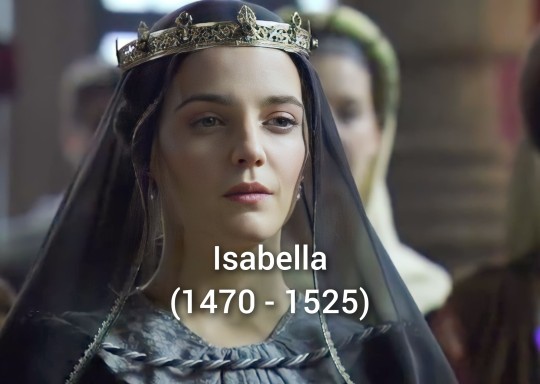
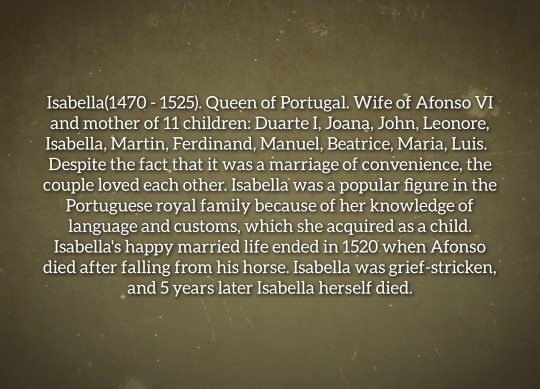

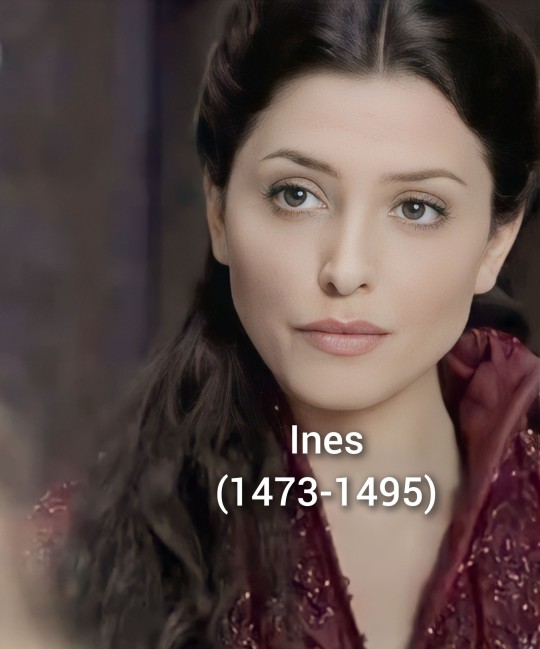

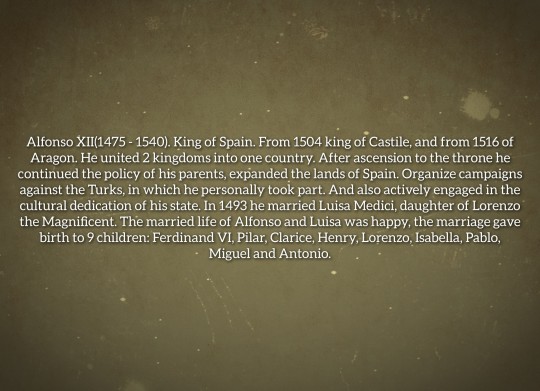

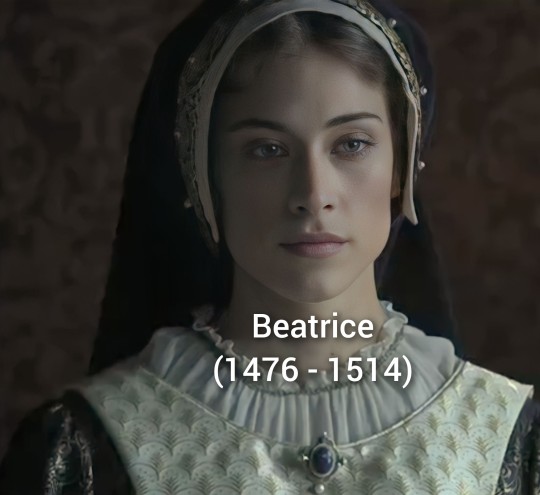


AU House of Trastamara: Children Isabella of Castile and Ferdinand of Aragon.
Isabella(1470 - 1525). Queen of Portugal. Wife of Afonso VI and mother of 11 children: Duarte I, Joana, John, Leonore, Isabella, Martin, Ferdinand, Manuel, Beatrice, Maria, Luis. Despite the fact that it was a marriage of convenience, the couple loved each other. Isabella was a popular figure in the Portuguese royal family because of her knowledge of language and customs, which she acquired as a child. Isabella's happy married life ended in 1520 when Afonso died after falling from his horse. Isabella was grief-stricken, and 5 years later Isabella herself died.
Ines(1473 - 1495). Married to the Venetian Doge Marcantonio Trevisan. Had two children by him: Piero and Lucrezia. Died before her husband became Doge. Their marriage was not long and very unhappy. Died in childbirth, giving birth to twins.
Alfonso XII(1475 - 1540). King of Spain. From 1504 king of Castile, and from 1516 of Aragon. He united 2 kingdoms into one country. After ascension to the throne he continued the policy of his parents, expanded the lands of Spain. Organize campaigns against the Turks, in which he personally took part. And also actively engaged in the cultural dedication of his state. In 1493 he married Luisa Medici, daughter of Lorenzo the Magnificent. The married life of Alfonso and Luisa was happy, the marriage gave birth to 9 children: Ferdinand VI, Pilar, Clarice, Henry, Lorenzo, Isabella, Pablo, Miguel and Antonio.
Beatrice(1486 - 1514). Queen of France. Wife of Charles VIII. Their marriage was an ordinary political alliance. Beatrice fell in love with her husband after a while, but he paid little attention to her. Charles preferred to spend his time in the company of his favorites. They gave birth to 5: Louis XII, Josephine, Francis I, Joffroy, Madeleine. The French did not like their queen either, but then she was able to win their love. Beatrice did a lot of charity work. She opened churches, free canteens, schools for the poor and their children. Died 10 days after the birth of her two daughters.
John(1478 - 1538). Grand Master of the Order of Santiago. Count de Alburquerque. Husband of Margaret of Austria. John loved his wife very much and was always interested in her opinion on any matter. They had 4 children: Sancha, Miguel, Elvira, Ramiro. He was the main advisor of his older brother. Personally participated in all military campaigns. He suffered the death of his wife, survived her by 8 years. He contracted the plague while returning home from a campaign and died a few days later.
AU: Дети Изабеллы Кастильской и Фердинанда Арагонского.
Изабелла(1470 - 1525). Королева Португалии. Жена Афонсу VI и мать 11 детей: Дуарте I, Жуана, Жуан, Леонор, Изабелла, Мартин, Фердинанд, Мануэль, Беатриса, Мария, Луис. Не смотря на то, что брак был по расчёту супруги любили друг друга. Изабелла была популяр��ой фигурой в португальской королевской семье благодаря тому, что имела неплохие познания в языке и обычаях, которые она приобрела ещё в детстве. Счастливая супружеская жизнь Изабеллы окончилась в 1520 году, когда Афонсу погиб упав с лошади. Изабелла была убита горем, а ещё через 5 лет не стало и самой Изабеллы.
Инес(1473 - 1495). Была замужем за веницианским дожем Маркантонио Тревизаном. Родила от него 2 детей: Пьеро и Лукреция. Умерла до того как её муж стал дожем. Их брак был не долгим и очень не счастливым. Умерла при родах, рожая на свет близнецов.
Альфонсо XII(1475 - 1540). Король Испании. С 1504 года король Кастилии, а с 1516 Арагона. Объединил 2 королевства в одну страну. После восшествия на престол продолжил политику своих родителей, расширил земли Испании. Организовывал походы против турок, в которых лично принимал участие. А также активно занимался культурным просвящением своего государства. В 1493 году женился на Луизе Медичи, дочери Лоренцо Великолепного. Супружеская жизнь Альфонсо и Луизы была счастливой, в браке родилось 9 детей: Фердинанд VI, Пилар, Клариче, Энрике, Лоренцо, Изабелла, Пабло, Мигель и Антонио.
Беатриса(1486 - 1514). Королева Франции. Жена Карла VIII. Их брак был обычным политическим союзом. Беатриса через некоторое время полюбила своего мужа, но он уделял ей мало внимания. Карл предпочитал проводить время в обществе своих фавориток. У них родилось 5: Людовик XII, Жозефина, Франциск I, Жоффруа, Мадлен. Французы тоже не долюбливали свою королеву из за того, что она была испанкой, но потом она смогла заваювать их любовь. А когда она умерла, то искренне оплакивали ее кончину. Беатриса занималась благотворительностью: открывала церкви, бесплатные столовые, школы для бедняков и их детей. Умерла через 10 дней после рождения 2 дочери.
Хуан(1478 - 1538). Великий Магистр ордена Сантьяго. Граф де Альбуркерке. Муж Маргариты Австрийской. Хуан очень сильно любил свою жену и всегда интересовался её мнением по любым вопросам. У них родилось 4 детей: Санча, Мигель, Эльвира, Рамиро. Был главным советником своего старшего брата. Лично участвовал во всех военных походах. Тяжело перенёс смерть своей жены, пережил её на 8 лет. Заразился чумой когда возвращался домой из похода и через несколько дней умер.
Part 1.
#history#history au#spain#spanish#spanish history#isabella#IsabellaofCastile#FerdinandofAravon#royal family#royalty#Isabel#catherine of aragon#henry viii#the tudors#mary tudor#15th century#16th century#au#spanish princess#the spanish princess#spanish royal family#spanish royalty#Royal#Royals
6 notes
·
View notes
Text

In the neon-lit skies of Neo-Aragon, a futuristic city-state where past and future collided, resided a young woman named Althea. She was known throughout the city not only for her striking beauty, emphasized by her brilliant blue eyeshadow and glittering attire but also for her unique connection to the ancient history of Aragon.
Althea was a descendant of Ramiro II of Aragon, the legendary king who ruled in the 12th century. But unlike her ancestors, Althea had inherited more than just royal blood; she possessed a rare genetic anomaly that allowed her to communicate with the spirits of her forebears. This ability was both a gift and a curse, as the spectral voices often overwhelmed her with their tales of battles, politics, and ancient wisdom.
One evening, while attending a lavish celebration in the heart of Neo-Aragon, Althea felt a familiar but unsettling presence. The vibrant colors around her seemed to pulse with energy, mirroring the chaos within her mind. As she danced under the multicolored lights, she felt the unmistakable touch of her ancestor, Ramiro II.
"Althea," his voice echoed in her mind, "the past and future are intertwined. Our legacy is at risk."
She excused herself from the revelry and sought solace in a quiet corner. Closing her eyes, she allowed Ramiro's spirit to guide her. In a vision, she saw a shadowy figure manipulating the threads of time, seeking to alter the course of history and erase the legacy of the Aragonese kings.
"The Chrono-Saboteur," Ramiro whispered, "an ancient enemy long thought defeated. He has returned to finish what he started."
Determined to protect her heritage, Althea embarked on a journey to find the Time Crystal, an artifact hidden deep within the city's catacombs. The crystal had the power to stabilize the temporal rifts and prevent the Chrono-Saboteur from achieving his goal. Her path was fraught with danger, as the catacombs were guarded by temporal anomalies and remnants of past battles.
Guided by the wisdom of her ancestors and her own resilience, Althea navigated the labyrinthine passages. Each step brought her closer to the crystal and deeper into the annals of her family's history. She encountered spectral warriors, including her great-grandfather who had fought in the Aragonese Wars, and received their blessings and advice.
Finally, she reached the chamber of the Time Crystal. Its ethereal glow illuminated the ancient inscriptions on the walls, telling stories of bravery and sacrifice. As she approached the crystal, the Chrono-Saboteur appeared, a figure shrouded in darkness and malice.
"Your efforts are futile, girl," he sneered. "The past cannot protect the future."
Althea, undeterred, raised her hand to the crystal. "I am not alone," she declared. "I carry the strength of my ancestors."
With a surge of energy, the crystal responded to her touch. Light burst forth, enveloping the chamber and casting out the darkness. The Chrono-Saboteur howled in defeat as the temporal rifts sealed shut, restoring the timeline.
As the light faded, Althea found herself back at the celebration, her glittering attire shimmering more brightly than ever. The presence of Ramiro II lingered, his voice now filled with pride.
"You have done well, Althea. Our legacy is secure, and the future is yours to shape."
With newfound confidence and a deeper connection to her heritage, Althea returned to the dance floor. The neon lights of Neo-Aragon swirled around her, a testament to the enduring spirit of the past and the endless possibilities of the future.
0 notes
Text
I just c/p this from wiki The Bell of Huesca is a legend describing how Ramiro II of Aragon, the Monk, cut off the heads of twelve nobles who did not obey him. The legend is told in the 13th-century anonymous Aragonese work the Cantar de la campana de Huesca.
After Alfonso I of Aragon died in 1134, leaving no descendants, his brother Ramiro, bishop of Roda de Isábena, inherited the Kingdom of Aragón, then one of the states of the Iberian Peninsula. The kingdom was facing a number of other domestic and foreign problems at the time.
The Chronicle of San Juan de la Peña from the 14th century tells how Ramiro II became so concerned about his nobles abusing his patience that he sent a herald to the Abbey of Saint-Pons-de-Thomières to ask for advice from his former master.
The herald was shown the abbey garden where the old monk removed the heads from roses that stood out from the rest (in other versions of the story, the roses are replaced by cabbages). The herald is then told to tell the king what he has seen.
After the heralds return, Ramiro II sent a message to the chief noble, saying that he wanted help in order to build a bell that could be heard all over Aragón. As the nobles arrived, the king cut off their heads, building a circle with the heads, with the chief noble's head suspended as the bell clapper. The result was then shown as an example to others.

The Bell of Huesca by José Casado del Alisal
229 notes
·
View notes
Text

Ramiro I of Aragon.
#ramiro i#rey de aragón#reyes de aragón#reyes de españa#monarquia española#king of aragon#rei d'aragón
5 notes
·
View notes
Text
THE BELL OF HUESCA - LA CAMPANA DE HUESCA
The king of Aragon, Alfonso I el Batallador, who died on September 7, 1134, without descendants, bequeathed his kingdoms to the Military Orders (that is, to the order of the Templars, the San Juanistas and the Knights of the Holy Sepulcher of Jerusalem), but no one thought of fulfilling that will. The Aragonese nobles, gathered in Jaca, offered the Crown of the Kingdom to their brother Ramiro, Bishop of Roda Barbastro. Ramiro was celebrating the Nativity of the Virgin in Tierrantona when he received the news of his brother's death the day before, having to occupy the throne. His coronation took place in Zaragoza on September 29, 1134, but with the commitment to return in two years to his ecclesiastical tasks, once the line of succession was secured.
The King, fed up with the excesses and rebellion of the Nobles, tried to take charge of the situation, but he had no idea how to do it; So he dispatched a trusted messenger to the monastery of San Ponce de Tomeras to ask his abbot for advice, with whom he had a deep friendship since his youth, when he took up the habits of a monk there. The messenger arrived at the monastery and quickly asked to be received by the Abbot, to whom he transmitted the King's message. The latter, after a brief thoughtful silence, ordered the messenger to accompany him to the garden. As they walked, and without anyone saying a word, the Abbot was cutting the cabbages (some sources speak of roses) that stood out the most over the others. After the walk, the Abbot turned to the messenger and said:
"Return to my Lord the King, and tell him how much you have seen"
The messenger, astonished at what had happened, mounted his horse and returned to convey the Abbot's message to the King. The monarch, unlike the stunned messenger, did understand what the Abbot meant. Now he knew exactly what he had to do.
Ramiro summoned the nobles to Cortes in Huesca, informing them that he wanted to show them a bell that he had ordered built, the sound of which would be heard throughout the kingdom. The nobles received the news between surprise and mockery, but on the day set there they appeared, curious to contemplate that bell that the King was talking about "let's go see that madness that the King wants to do", says the Chronicle of St. Juan de la Peña (Drafted in the fourteenth century) that the nobles thought. Before starting the Cortes, he invited them to a copious barbecue washed down with abundant good wine to agree on an agenda among all. After dinner, the King was inviting one by one the main members of the nobility to enter the room below the throne to discuss in private with them and show them the famous bell.
The nobles, as they entered, were cut down by six burly mountaineers who promptly decapitated them. Headless bodies were thrown into a corner while heads were arranged in a circle. Fifteen heads were arranged in this way on the ground when he brought in Bishop Ordás de Zaragoza, the main leader of the conspiracies against him. The Bishop, seeing the show, was overwhelmed. The King asked him if he did not think it was the most beautiful bell ever made, and if he believed that something was missing, to which the Bishop, full of terror, replied that nothing was missing. The King then replied:
"Yes, something is missing, and this is the clapper, and to make up for it your head is destined."
Ordás was also beheaded and his head hung from a hook in the middle of the circle formed by the other heads.
Once the bell was finished, the King invited the rest of the nobles to enter with him to admire the bell that he had told them so much about.
"You are going to see the bell that I have melted in the underground to ring for greater glory and strength of Ramiro II! I am certain that its ringing will make you restrained, solicitous and obedient to my commands ”.
The nobles upon entering the room were terrified at what they saw. They understood that they were not dealing with a wimp that they could handle at will, but that Ramiro II had proven to be a strong king who would not hesitate at anything in order to preserve the kingdom of Aragon.
As Aragonese that I am, I believe in the legend of the Bell of Huesca. And as a lover of History I have read that during the Reign of Ramiro II a few Nobles disappear from the documents ……. The room where the events occurred continues to exist, it is part of the Huesca Museum, as it stands next to the old Royal Palace.
Between 1879 and 1880, the painter of Romanticism, José Casado del Alisal painted a huge painting at the Spanish Academy of Fine Arts in Rome that represents the moment when the King discovered the "Bell" to the Nobles. Property of the Prado Museum, the painting has been deposited and has been exhibited in the Huesca City Hall since 1950.
Now you too can have this work of art in your home.
To do this first you need the painting "The Rape of the Sabine Women" by @thejim07.
You can download it HERE.
As always, I have to thank my colleagues @navidesigns and @artyssims for being my guinea pigs as always.
-----------------------------------------------------------------------------------------------------------
Fallecido el 7 de septiembre 1134 el rey de Aragón, Alfonso I el Batallador, sin descendencia, legó sus reinos a las Órdenes Militares (es decir, a la orden de los Templarios, a los Sanjuanistas y a los caballeros del Santo Sepulcro de Jerusalén), pero nadie pensó en cumplir dicho testamento. Los nobles aragoneses, reunidos en Jaca, ofrecieron la Corona del Reino a su hermano Ramiro, Obispo de Roda Barbastro. Ramiro se encontraba celebrando la Natividad de la Virgen en Tierrantona cuando recibió la noticia de la muerte de su hermano el día anterior, teniendo que ocupar el trono. Su coronación tuvo lugar en Zaragoza el 29 de septiembre de 1134, pero con el compromiso de regresar en dos años a sus quehaceres eclesiásticos, una vez asegurada la línea de sucesión. Con un rey inexperto y en apariencia pusilánime los nobles aragoneses pensaron que podrían manejarlo a su antojo.
El Rey, harto de los desmanes y rebeldía de los Nobles trató de hacerse cargo de la situación, pero no tenía la menor idea de cómo hacerlo; así que despachó un mensajero de confianza al monasterio de San Ponce de Tomeras para pedir consejo a su Abad, con el que le unía una profunda amistad desde su juventud, cuando tomó allí los hábitos de monje. El mensajero llegó al monasterio y rápidamente pidió ser recibido por el Abad, al que le transmitió el mensaje del Rey. Éste, después de un breve silencio pensativo, ordenó al mensajero que lo acompañara al huerto. Mientras paseaban, y sin que nadie pronunciara palabra alguna, el Abad fue cortando las coles (algunas fuentes hablan de rosas) que más sobresalían sobre las demás. Acabado el paseo, el Abad se volvió hacia el mensajero y le dijo:
“Vuelve a mi Señor el Rey, y cuéntale cuánto has visto”
El mensajero, atónito ante lo que había pasado, montó en su caballo y regresó a transmitir al Rey el mensaje del Abad. El monarca, al contrario que el estupefacto mensajero, sí que entendió lo que el Abad quería decir. Ahora sabía exactamente lo que tenía que hacer.
Ramiro convocó a los nobles a Cortes en Huesca comunicándoles que quería enseñarles una campana que había mandado construir, cuyo sonido se escucharía por todo el reino. Los nobles recibieron la noticia entre la sorpresa y la burla, pero el día fijado allí se presentaron, curiosos por contemplar esa campana de la que el Rey les hablaba ���vayamos a ver esa locura que el Rey quiere hacer “, dice la Crónica de San Juan de la Peña (Redactada en el siglo XIV) que pensaron los nobles. Antes de empezar las Cortes, les invitó a un copioso asado regado con abundante buen vino para consensuar un orden del día entre todos. En la sobremesa, el Rey fue invitando uno a uno a los principales miembros de la nobleza a entrar en la sala de debajo del trono para debatir en privado con ellos y enseñarles la famosa campana.
Los nobles, conforme iban entrando, eran reducidos por seis fornidos montañeses que sin perder tiempo los decapitaban. Los cuerpos descabezados eran echados a un rincón mientras las cabezas eran dispuestas en un círculo. Quince cabezas se disponían de esta forma en el suelo cuando hizo entrar al Obispo Ordás de Zaragoza, principal cabecilla de las conjuras contra él. El Obispo, al ver el espectáculo, quedó sobrecogido. El Rey le preguntó si no le parecía la más hermosa campana jamás hecha, y si creía que le faltaba algo, a lo que el Obispo, lleno de terror, contestó que no faltaba nada. El Rey entonces le contestó:
“Sí que le falta algo, y esto es el badajo, y para suplirlo destino tu cabeza”.
Ordás fue también decapitado y su cabeza colgada de un gancho en medio del círculo que formaban las otras cabezas.
Una vez terminada la campana, el Rey invitó al resto de los nobles a entrar con él para admirar la campana de la que tanto les había hablado.
“Vais a ver la campana que he hecho fundir en los subterráneos para que repique a mayor gloria y fortaleza de Ramiro II,! Estoy cierto que su tañido os hará comedidos, solícitos y obedientes a mis mandatos”.
Los nobles al entrar en la sala quedaron aterrorizados ante lo que vieron. Comprendieron que no se las tenían con un pelele al que pudieran manejar a su antojo, sino que Ramiro II había demostrado ser un rey fuerte que no vacilaría ante nada con tal de conservar el reino de Aragón.
Como Aragonés que soy, creo en la leyenda de la Campana de Huesca. Y como amante de la Historia he leído que durante el Reinado de Ramiro II unos cuantos Nobles desaparecen de los documentos……. La sala donde ocurrieron los hechos sigue existiendo, forma parte del Museo de Huesca, ya que se levanta junto al antiguo palacio Real.
Entre 1879 y 1880, el pintor del Romanticismo, José Casado del Alisal pinto en la Academia Española de Bellas Artes de Roma un enorme cuadro que represente el momento en el que el Rey descubre a los Nobles la “Campana”. Propiedad del Museo del Prado, el cuadro esta depositado y se expone en el Ayuntamiento de Huesca desde 1950.
Ahora vosotros también podéis tener en vuestras casas esta obra de arte.
Para ello primeo necesitáis el cuadro de “El Rapto de las Sabinas” de @thejim07.
Lo podéis descargar AQUÍ.
Como siempre he de dar las gracias a mis compañeros @navidesigns y @artyssims por ser como siempre mis conejillos de Indias.
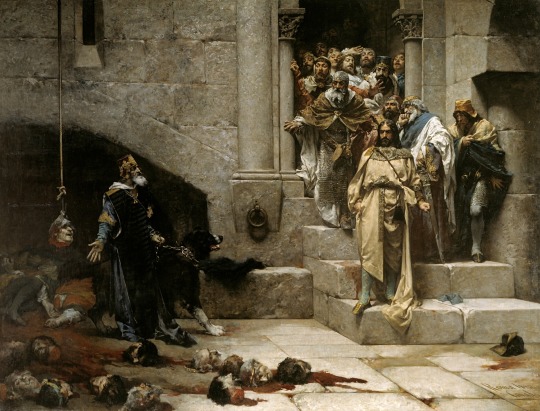
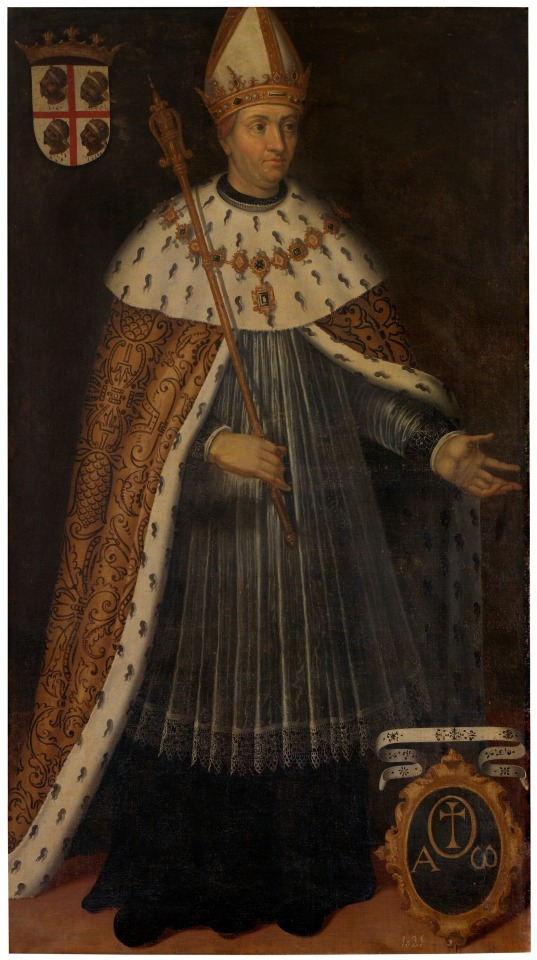

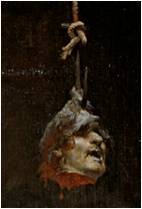

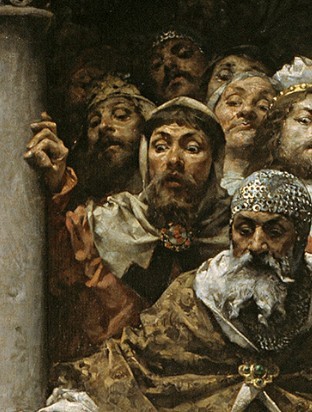
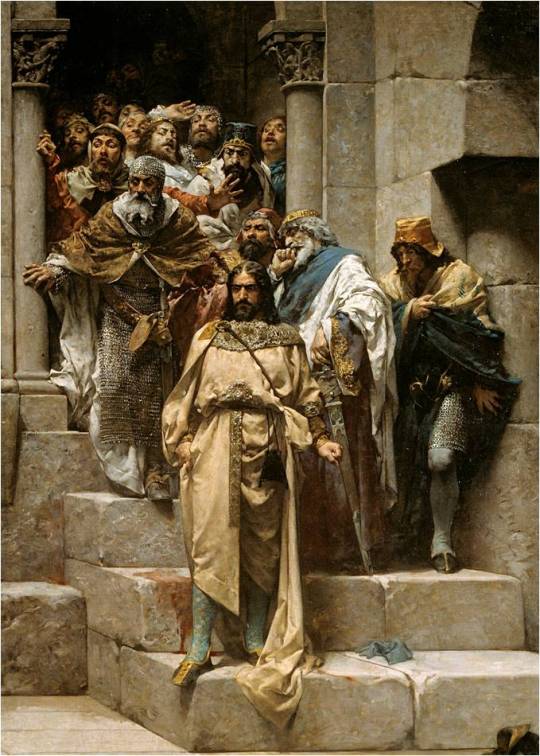
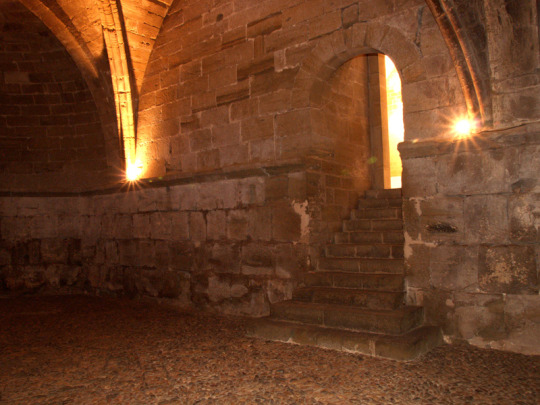


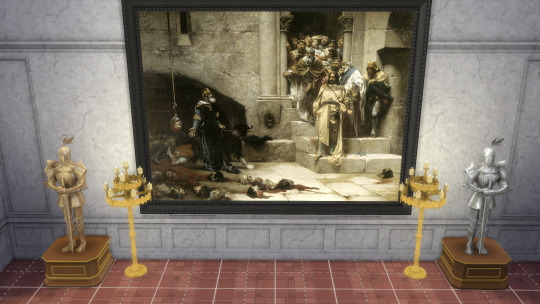
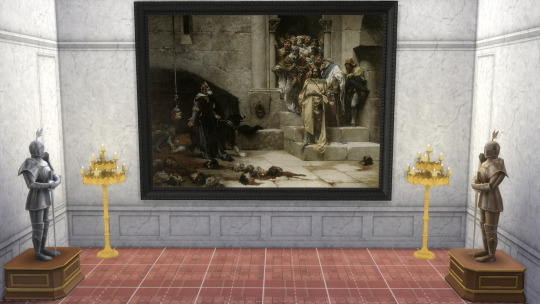
37 notes
·
View notes
Note
Have there ever been male twins born to a king and queen, and what was the protocol on succession? I'm asking because I was thinking about the Man in the Iron Mask theory, and apart from it being unlikely that a queen could give birth in private, it seems unlikely to me that keeping only one child would be the course taken, especially considering infant mortality rates back then. Is there a precedent for how this case would be dealt with?
There have been male twins born into royalty yet the problem of succession has always solved itself with a twin either dying or the birth being witnessed to attest one twin being older. The royal family would certainly keep their twin sons, raising the elder as heir and the other as the spare. As in with regular siblings, the younger would serve the elder as a lieutenant, a councillor, a commander and anything they might be needed to be. If the younger one might cause problems with succession, the parents might pack him off to a monastery or another form of religious celibacy which:
Is a respectable and easy way to deal with a inconvenient Prince
He can always be recalled if the throne is vacant (see Ramiro II of Aragon)
54 notes
·
View notes
Photo


When Cesare occupied the Romagna he found it under the rule of weak masters, who robbed their subjects rather than ruled them, and gave them more cause for rebellion than for union. So the country was full of robbery, quarrels, and every kind of violence. So, wishing to bring back peace and obedience to authority, he considered it necessary to give it a good governor. Thus he promoted Ramiro d'Orco, an efficient and cruel man, to whom he gave the fullest power. This man in a short time restored peace and unity with great success. Afterwards Cesare considered that it was not a good idea to confer such excessive authority, for he had no doubt that he would become disliked. So he set up a court of judgment in the country, under an excellent president, in which all cities had their advocates. He knew that the past severity had caused some hatred against him. So, to clear himself in the minds of the people, and make them entirely loyal to him, he desired to show that, if any cruelty had been practised, it had not originated from him, but came from the personal cruelty of the governor. Under this pretence Cesare took Ramiro, and one morning had him killed and left in the square at Cesena with the block and a bloody knife at his side. This terrible sight caused the people to be at the same time satisfied and worried.
CHAPTER VI
A prince should appear merciful, faithful, kind, religious, upright, but should be flexible enough to make use of the opposite qualities when it is necessary.
And you have to understand this, that a prince, especially a new one cannot do all those things for which men are praised, being often forced, in order to maintain the state, to act contrary to honesty, friendship, kindness, and religion. Therefore it is necessary for him to have a mind ready to turn itself accordingly as the winds and variations of fortune force it. Yet, as I have said above, a prince should not to turn away from the good if he can avoid doing so, but, if it is truly necessary, then he should know how to set about it.
One prince of the present time, whom it is not wise to name, never preaches anything else but peace and good faith, and yet to both he is most opposed. If he had followed what he preached, he would have lost his reputation and kingdom many a time.
CHAPTER XVIII
Nothing makes a prince so famous as great achievements and setting a fine example. We have in our time Ferdinand of Aragon, the present King of Spain. He can almost be called a new prince, because he has risen, by success and glory, from being an insignificant king to be the most famous king in our part of the world. If you examine his deeds, you will find them all great and some of them extraordinary. When he first became king, he attacked Granada, and this was the foundation of his success. He did this quietly at first and without any fear of others standing against him, because he kept the minds of the barons of Castile occupied in thinking of the war and not anticipating any innovations. Thus, they did not perceive that by these means he was acquiring power and authority over them. He was able with the money of the Church and of the people to sustain his armies, and by that long war to lay the foundation for the military skill which has since distinguished him. In addition, always using religion as a justification, in order to undertake greater schemes, he devoted himself with great cruelty to driving out and clearing his kingdom of the Moors. There could not be a more admirable example, nor one more rare. Using this same reason, he attacked Africa, he began fighting in Italy, and he has finally attacked France. Thus his achievements and designs have always been so remarkable that they have kept the minds of his people in admiration and kept them occupied with carrying them out. His actions have arisen in such a way, one out of the other, that people have never been given enough time to work steadily against him.
CHAPTER XXI
- Niccolò Machiavelli, The Prince
@mayaofatlantis
#perioddramaedit#historyedit#men in history#cesare borgia#ferdinand ii of aragon#the borgias#S03E01#isabel tve#S02E11#françois arnaud#rodolfo sancho
148 notes
·
View notes
Text
#el cid#polls#favourite characters#El Cid (2020)#rodrigo díaz de vivar#ruy#urraca de zamora#fernando i de león#sancha de león#doña jimena#jimena díaz#alfonso vi de león#garcía ii de galicia#sancho ii de castilla#elvira de toro#ramiro i de aragón#i realized this poll ended up being mainly about the leonese royal family but anyways#i will do other polls with some others characters later#i have included here ramiro i of aragon too because he was ferdinand i of leon's bastard brother#ramiro i and ferdinand i's father was sancho iii of pamplona and garcia iii of pamplona was their brother too#el cid polls
5 notes
·
View notes
Photo



Ramiro I (bef. 1007 – 1063)
He was the first King of Aragon from 1035 until his death, making Jaca his capital. He was the illegitimate son of Sancho III of Pamplona by his mistress Sancha of Aybar. During his father's reign, he appeared as witness of royal charters starting in 1011, and was given numerous properties in the county of Aragon.
On his death in 1035 King Sancho III left his kingdom split amongst his 4 sons. His eldest legitimate son García was left the Kingdom of Navarra. The other sons had to swear fealty to García. Fernando inherited the county of Castile, Gonzalo the counties of Sobrarbe and Ribagorza, and finally Ramiro was granted the county of Aragon, also now given the title of Kingdom. After the death of his brother Gonzalo, Ramiro annexed Sobrarbe and Ribagorza to his territory.

Aragon also gained territory from the Moors with military victories in the nowadays provinces of Huesca and Navarra. Bouyed by victories he attacked the stronghold of Graus.The town had been reinforced with both Moorish soldiers from Zaragoza and paid for Christian troops. Ramiro was repelled and killed during the assault. Ramiro I of Aragon established the monastery of San Juan de la Peña as the royal pantheon within which he and his descendants were to be buried. Sancho Ramírez, his son and successor, was King of Aragon, but also became King of Pamplona.
(x)(x)
22 notes
·
View notes
Text

Sos del Rey Católico in Zaragoza. Spain Sos del Rey Católico is a historic town and municipality in the Cinco Villas comarca, province of Zaragoza, in Aragon, Spain Located on rocky and elevated terrain, this important border town served well as a stronghold from the year 907 It was incorporated in 1044 by Ramiro I into the Kingdom of Aragon. n the year 1452, during the Navarrese Civil War, Queen Juana Enríquez de Córdoba moved to the town, then called "Sos". There she gave birth to the infante Ferdinand on March 10, 1452, who later became Ferdinand II of Aragon, one of the Catholic Monarchs. His birth added "del Rey Católico" to the name of the town, which translates as "of the Catholic King"
2 notes
·
View notes
Text
Mermaid hand mirror

Assona Iniguez de Navarre Musa ibn Fortun 0717 Fortun ibn Qasi 0725 Aisha bint Abdul 0690 Cassius Abd-al- Aziz ibn Musa ~0695 Egilon de Visigoths 0660 - 0718 Musa Ben Nuseir 58 58 Conqueror of Spaindied in prison in DamascusNote: Al-Walid ibn Abd al-Malik, Caliph of Damascus (705-715), fearing Musa's military success and popularity, recalled Musa to Damascus, where Musa died in prison three years later. In some places, De Castro appears to have this Diego Lainez confused with the brother of his ancestor Fernan Lainez, who bears the same name. Mugawwan ibn Nahur Nahur ibn Yarub Yarub ibn Yashjub Yashjub ibn Nabet Nabet ibn Ishmael Amra Sasaa 0575 Alkama al- Kinaniyya 0602 Mu'Awiya Ben-Al- Mughira ~0820 - 0908 Fortun Garces 88 /1060 - 1115 Jimena Diaz ~0815 Aria Munia 0772 - 0816 Sancho de Gascony 44 44 ~0775 de Aragon ~0681 Loup de Gascony ~0734 Numabela de Cantabria ~0750 - ~0839 Aznar Galindez 89 89 Loup ibn Musa Ayab al- Bulatya Musa ibn Musa Father of "El Cid". Rodrigo Diaz "El Cid" de Vivar, leading the army of Al-Mutamin of Zaragoza, defeats a combined army of the kings of Valencia (Al-Mundhir), Lerida (Al-Hayib), Aragon (Sancho Ramirez) and the Count of Barcelona (Berenguer Ramon II - who is captured).1084The Muslim army of Zaragoza under El Cid defeats the Aragonese. Rodrigo Diaz, defeats the Emir Abd Allah of Granada, who was helped by the Castilian Count Garcia Ordonez.1082Battle of Almenar (Menendez, 1934). Rodrigo Diaz de Vivar manages to encourage both King and army, and leads them in a new attack the following morning.1079Battle of Cabra. The battle starts at dawn and after a hard fight the Castilians are driven from the field. Sancho II of Castile defeats his brother, Alfonso VI of Leon over the Carrion River (9 miles south of the city of Santa maria de Carrion - the capital of the Beni-Gomez - Christian counts of Saldana, Liebana, Carrion, and Zamora). The Castilians under Sancho II and Rodriego Diaz defeat the Leonese and Alfonso flees.1072Battle of Golpejera (early Jan) (Menendez, 1934). The siege is lifted after Emir Al-Muqtadir pays a large ransom and promises tribute.1068The Battle of Llantada was arranged to be fought on 19 July by the banks of the Pisuerga River on the boundary between Leon and Castile (Menendez, 1934). The opposing armies meet and after a protracted struggle Ramiro I is killed and the Aragonese flee (8 May).1067The Castilian army under Sancho II and the Alferez Rodrigo Diaz de Vivar - already known as "El Cid" by this time - besiege Zaragoza (Menendez, 1934). Rodrigo Diaz de Vivar (later known as "El Cid") is probably in the Castilian contingent. The Emir Al-Muktadir of Zaragoza leads his army north accompanied by a Castilian contingent under Prince Sancho (the future Sancho II). During the spring Ramiro I of Aragon besieges Muslim Graus in Zaragozan territory. After taking Valencia in 1094, he passed into legend as "El Cid", interestingly an Arabic title, Sid, "lord, master."1063Battle of Graus (Menendez, 1934). Rodrigo came to fall out of favor and in 1081 became a mercenary, fighting for both Christians and Moslems. Udad ibn Mugawwan 1049 - 1099 Rodrigo Diez de Vivar 50 50 When Alfonso, deposed by his brother, Sancho II of Castile, returned to power in Castile as well Leon, he took on many of Sancho's retainers, including one Rodrigo Diaz (d. "Beyond `Adnan none but the Lord knows and thegenealogists lie". ABT 2643 BC Sekhemkhet (3rd Dynasty - abt 2649-43 BC) ~1020 Sancho Fortun de Maranon sn de Maranon ABT 0610/0620 - >0716 Theodo von Bayern ~0602 Gleisnod b? Salzburg, Austria ~0002 Ilyas ibn Mudar Abt 0002 BC/0010 AD Layla bani Khindif Codhaite 0031 BC Mudar ibn Nizar 0040 BC Al- Hanfa al Riyab Nizar ibn Ma'add Ma'add ibn Adnan Adnan ibn Udad Note: Muhammad the Prophet never traced his ancestors farther than`Adnan, anddeclared that all who went back further were guilty offabrication andfalsehood. ABT 2637 BC Khaba # NSFX: (3rd Dynasty - abt 2643-37 BC) D. ? Raqashi al- Naqimiya Bakr 0335 Murra ibn Ka'b Hind 0305 Kab ibn Luayy ~0320 Makhshiya Lu'ayy ibn Ghalib ~0280 Mawiya Ghalib ibn Fihr ABT 0225/0240 Atika Salma binte-Umro- bin-Rabia ~1010 - 1054 Garcia Sanchez 44 44 King of Pamplona ~0215 Fihr ibn Malik ~0215 Layla 17622 bint Adwan 0948 Foucher de Chartres Qays al-Nadr ibn Kinama Ikrisha bint Adwan ~0662 - 0725 Tassilo von Bayern 63 63 ~0930 Hughes de Chartres D. see for information on how tocorrectly configure a web server for svg files. PLEASE NOTE: If you do not see a GRAPHIC IMAGE of a family tree here but are seeing this textinstead then it is most probably because the web server is not correctly configured to serve svgpages correctly.

1 note
·
View note
Photo

Ramiro I, primer monarca del Reino de Aragón. Escultura en bronce frente a la famosa Torre del Reloj de Jaca, Huesca, España. 🇪🇸 . . #fushoots #letsguide #localguides #spain #españa #jaca #aragónturismo #aragon #pirineos #pirineosaragoneses #reinodearagón #torredelreloj (en Torre del Reloj) https://www.instagram.com/p/Cicbo2-sNDC/?igshid=NGJjMDIxMWI=
#fushoots#letsguide#localguides#spain#españa#jaca#aragónturismo#aragon#pirineos#pirineosaragoneses#reinodearagón#torredelreloj
0 notes